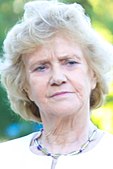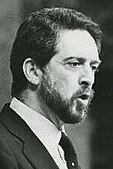1999 Seville City Council election
| |||||||||||||||||||||||||||||||||||||||||||||||||||||||||||||||||||||||||||
All 33 seats in the City Council of Seville 17 seats needed for a majority | |||||||||||||||||||||||||||||||||||||||||||||||||||||||||||||||||||||||||||
|---|---|---|---|---|---|---|---|---|---|---|---|---|---|---|---|---|---|---|---|---|---|---|---|---|---|---|---|---|---|---|---|---|---|---|---|---|---|---|---|---|---|---|---|---|---|---|---|---|---|---|---|---|---|---|---|---|---|---|---|---|---|---|---|---|---|---|---|---|---|---|---|---|---|---|---|
| Opinion polls | |||||||||||||||||||||||||||||||||||||||||||||||||||||||||||||||||||||||||||
| Registered | 586,032 | ||||||||||||||||||||||||||||||||||||||||||||||||||||||||||||||||||||||||||
| Turnout | 331,068 (56.5%) | ||||||||||||||||||||||||||||||||||||||||||||||||||||||||||||||||||||||||||
| |||||||||||||||||||||||||||||||||||||||||||||||||||||||||||||||||||||||||||
| |||||||||||||||||||||||||||||||||||||||||||||||||||||||||||||||||||||||||||
The 1999 Seville City Council election, also the 1999 Seville municipal election, was held on Sunday, 13 June 1999, to elect the 6th City Council of the municipality of Seville. All 33 seats in the City Council were up for election. The election was held simultaneously with regional elections in thirteen autonomous communities and local elections all throughout Spain, as well as the 1999 European Parliament election.
Electoral system[edit]
The City Council of Seville (Spanish: Ayuntamiento de Sevilla) was the top-tier administrative and governing body of the municipality of Seville, composed of the mayor, the government council and the elected plenary assembly.[1] Elections to the local councils in Spain were fixed for the fourth Sunday of May every four years.[2] Voting for the local assembly was on the basis of universal suffrage, which comprised all nationals over 18 years of age, registered in the municipality of Seville and in full enjoyment of their political rights, as well as resident non-national European citizens and those whose country of origin allowed Spanish nationals to vote in their own elections by virtue of a treaty.
Local councillors were elected using the D'Hondt method and a closed list proportional representation, with an electoral threshold of five percent of valid votes—which included blank ballots—being applied in each local council.[1][2] Councillors were allocated to municipal councils based on the following scale:
| Population | Councillors |
|---|---|
| <250 | 5 |
| 251–1,000 | 7 |
| 1,001–2,000 | 9 |
| 2,001–5,000 | 11 |
| 5,001–10,000 | 13 |
| 10,001–20,000 | 17 |
| 20,001–50,000 | 21 |
| 50,001–100,000 | 25 |
| >100,001 | +1 per each 100,000 inhabitants or fraction +1 if total is an even number |
The mayor was indirectly elected by the plenary assembly. A legal clause required that mayoral candidates earned the vote of an absolute majority of councillors, or else the candidate of the most-voted party in the assembly was to be automatically appointed to the post. In the event of a tie, the appointee would be determined by lot.[1]
The electoral law allowed for parties and federations registered in the interior ministry, coalitions and groupings of electors to present lists of candidates. Parties and federations intending to form a coalition ahead of an election were required to inform the relevant Electoral Commission within ten days of the election call, whereas groupings of electors needed to secure the signature of a determined amount of the electors registered in the municipality for which they were seeking election, disallowing electors from signing for more than one list of candidates. For the case of Seville, as its population was between 300,001 and 1,000,000, at least 5,000 signatures were required.[2]
Opinion polls[edit]
The table below lists voting intention estimates in reverse chronological order, showing the most recent first and using the dates when the survey fieldwork was done, as opposed to the date of publication. Where the fieldwork dates are unknown, the date of publication is given instead. The highest percentage figure in each polling survey is displayed with its background shaded in the leading party's colour. If a tie ensues, this is applied to the figures with the highest percentages. The "Lead" column on the right shows the percentage-point difference between the parties with the highest percentages in a poll. When available, seat projections determined by the polling organisations are displayed below (or in place of) the percentages in a smaller font; 17 seats were required for an absolute majority in the City Council of Seville.
| Polling firm/Commissioner | Fieldwork date | Sample size | Turnout | IULV | Lead | |||
|---|---|---|---|---|---|---|---|---|
| 1999 municipal election | 13 Jun 1999 | — | 56.5 | 35.8 13 |
35.2 12 |
17.6 6 |
7.8 2 |
0.6 |
| Eco Consulting/ABC[p 1][p 2] | 24 May–2 Jun 1999 | 400 | ? | 31.2 10/11 |
28.8 9/10 |
27.2 9 |
11.4 3/4 |
2.4 |
| Demoscopia/El País[p 3] | 26 May–1 Jun 1999 | ? | ? | 36.2 12/13 |
32.3 11 |
19.7 6/7 |
10.1 3 |
3.9 |
| Sigma Dos/El Mundo[p 4][p 5] | 22–26 May 1999 | 400 | ? | 29.7 10/11 |
32.2 10/11 |
24.3 8/9 |
11.6 3/4 |
2.5 |
| CIS[p 6][p 7] | 7–18 May 1999 | 559 | ? | 39.5 13/14 |
34.2 11/12 |
14.4 4/5 |
9.4 3 |
5.3 |
| ITEM/Tele 5[p 8] | 21–29 Apr 1999 | 600 | ? | 46.0 15/16 |
39.0 13 |
? 2/3 |
? 2 |
7.0 |
| 1996 regional election[3] | 3 Mar 1996 | — | 77.6 | 37.0 (12) |
39.9 (14) |
9.4 (3) |
13.2 (4) |
2.9 |
| 1996 general election[4] | 3 Mar 1996 | — | 77.7 | 38.9 (14) |
42.4 (15) |
4.0 (0) |
12.9 (4) |
3.5 |
| 1995 municipal election | 28 May 1995 | — | 63.3 | 30.4 10 |
28.5 10 |
26.2 9 |
12.9 4 |
1.9 |
Results[edit]
 | ||||||
| Parties and alliances | Popular vote | Seats | ||||
|---|---|---|---|---|---|---|
| Votes | % | ±pp | Total | +/− | ||
| People's Party (PP) | 118,072 | 35.85 | +5.41 | 13 | +3 | |
| Spanish Socialist Workers' Party of Andalusia (PSOE–A) | 115,968 | 35.21 | +6.67 | 12 | +2 | |
| Andalusian Party (PA)1 | 58,093 | 17.64 | –8.75 | 6 | –3 | |
| United Left/The Greens–Assembly for Andalusia (IULV–CA) | 25,606 | 7.77 | –5.10 | 2 | –2 | |
| The Greens–Andalusian Left (LV–IA) | 2,594 | 0.79 | New | 0 | ±0 | |
| Democratic Party of the New Left–Andalusia (PDNI–A) | 608 | 0.18 | New | 0 | ±0 | |
| Voice of the Andalusian People (VDPA) | 279 | 0.08 | –0.08 | 0 | ±0 | |
| The Phalanx (FE) | 264 | 0.08 | New | 0 | ±0 | |
| Centrist Union–Democratic and Social Centre (UC–CDS) | 235 | 0.07 | New | 0 | ±0 | |
| Humanist Party (PH) | 211 | 0.06 | –0.01 | 0 | ±0 | |
| Andalusia Assembly (A) | 138 | 0.04 | New | 0 | ±0 | |
| Independent Spanish Phalanx (FEI) | 130 | 0.04 | New | 0 | ±0 | |
| Blank ballots | 7,170 | 2.18 | +0.81 | |||
| Total | 329,368 | 33 | ±0 | |||
| Valid votes | 329,368 | 99.49 | –0.12 | |||
| Invalid votes | 1,700 | 0.51 | +0.12 | |||
| Votes cast / turnout | 331,068 | 56.49 | –6.85 | |||
| Abstentions | 254,964 | 43.51 | +6.85 | |||
| Registered voters | 586,032 | |||||
| Sources[5][6][7] | ||||||
Footnotes:
| ||||||
Notes[edit]
References[edit]
- Opinion poll sources
- ^ "El PP avanza en Sevilla y podría repetir junto a los andalucistas en el Ayuntamiento". ABC (in Spanish). 5 June 1999.
- ^ "El PP, el PSOE, el PA e IU mantienen el número de concejales en Sevilla". ABC Sevilla (in Spanish). 5 June 1999.
- ^ "El PP amplía su ventaja en Andalucía". El País (in Spanish). 7 June 1999.
- ^ "Sevilla: PSOE, PP y PA, al 'sprint'". El Mundo (in Spanish). 2 June 1999.
- ^ "ELECCIONES 13-J /BALANCE DE LAS ENCUESTAS". El Mundo (in Spanish). 6 June 1999.
- ^ "El PP conserva su poder municipal, autonómico y europeo, e IU se hunde". La Vanguardia (in Spanish). 5 June 1999.
- ^ "Estudio CIS nº 2344. Ficha técnica" (PDF). CIS (in Spanish). 4 June 1999.
- ^ "Una encuesta da al PP como claro vencedor en las ocho capitales". El País (in Spanish). 4 May 1999.
- Other
- ^ a b c Ley 7/1985, de 2 de abril, Reguladora de las Bases del Régimen Local (Law 7) (in Spanish). 2 April 1985. Retrieved 30 June 2020.
- ^ a b c Ley Orgánica 5/1985, de 19 de junio, del Régimen Electoral General (Organic Law 5) (in Spanish). 19 June 1985. Retrieved 30 January 2020.
- ^ "Electoral Information System. Parliament of Andalusia. March 1996. Seville Municipality". juntadeandalucia.es (in Spanish). Government of Andalusia. Retrieved 3 April 2018.
- ^ "Electoral Results Consultation. Congress. March 1996. Seville Municipality". Ministry of the Interior (in Spanish). Retrieved 12 November 2017.
- ^ "Local election results, 13 June 1999" (PDF). Central Electoral Commission (in Spanish). Retrieved 16 February 2018.
- ^ "Electoral Results Consultation. Municipal. June 1999. Seville Municipality". Ministry of the Interior (in Spanish). Retrieved 12 November 2017.
- ^ "Elecciones municipales en Sevilla (1979 - 2015)". Historia Electoral.com (in Spanish). Retrieved 30 September 2017.




